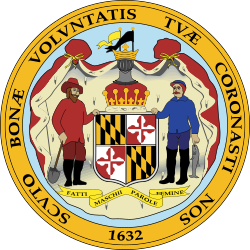November 7, 2000 | ||||||||||||||||||||||||||||
All 8 Maryland seats to the United States House of Representatives | ||||||||||||||||||||||||||||
|---|---|---|---|---|---|---|---|---|---|---|---|---|---|---|---|---|---|---|---|---|---|---|---|---|---|---|---|---|
| ||||||||||||||||||||||||||||
| ||||||||||||||||||||||||||||
| Elections in Maryland |
|---|
 |
The 2000 congressional elections in Maryland were held on November 7, 2000, to determine the persons representing the state of Maryland in the United States House of Representatives. Maryland held eight seats in the House, apportioned according to the 1990 United States census. Representatives were elected for two-year terms; those elected in 2000 served in the 107th Congress from January 3, 2001, until January 3, 2003.
Contents
- Overview
- District 1
- District 2
- District 3
- District 4
- District 5
- District 6
- District 7
- District 8
- References
- External links
As of 2021, this is the last time that Maryland's delegation to the United States House of Representatives was tied, or that Republicans have even won more two seats.

